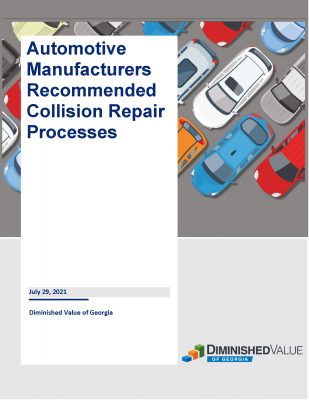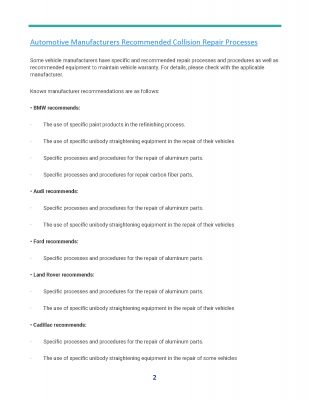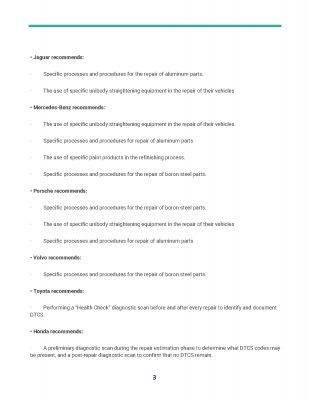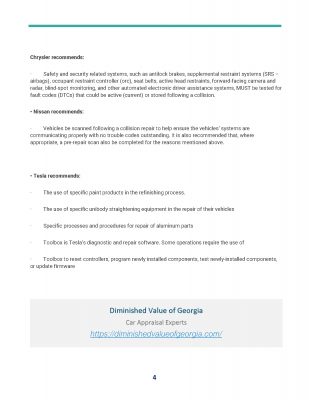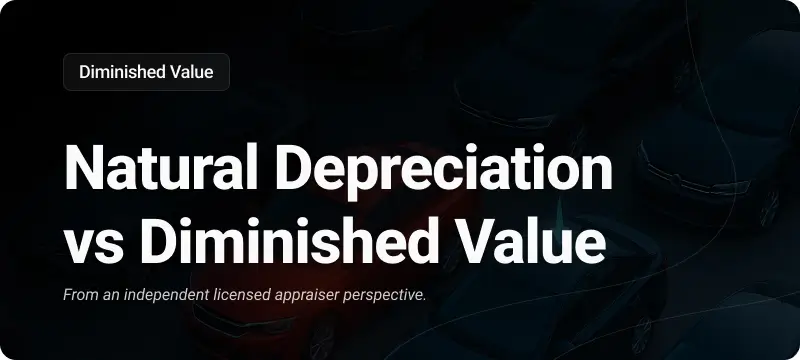Automotive Manufacturers Recommended Collision Repair Processes
Some vehicle manufacturers have specific and recommended repair processes and procedures as well as recommended equipment to maintain vehicle warranty. For details, please check with the applicable manufacturer.
Known manufacturer recommendations are as follows:
• BMW recommends:
· The use of specific paint products in the refinishing process.
· The use of specific unibody straightening equipment in the repair of their vehicles
· Specific processes and procedures for the repair of aluminum parts.
· Specific processes and procedures for repair carbon fiber parts.
• Audi recommends:
· Specific processes and procedures for the repair of aluminum parts.
· The use of specific unibody straightening equipment in the repair of their vehicles
• Ford recommends:
· Specific processes and procedures for the repair of aluminum parts.
• Land Rover recommends:
· Specific processes and procedures for the repair of aluminum parts.
· The use of specific unibody straightening equipment in the repair of their vehicles
• Cadillac recommends:
· Specific processes and procedures for the repair of aluminum parts.
· The use of specific unibody straightening equipment in the repair of some vehicles
• Jaguar recommends:
· Specific processes and procedures for the repair of aluminum parts.
· The use of specific unibody straightening equipment in the repair of their vehicles
• Mercedes-Benz recommends:
· The use of specific unibody straightening equipment in the repair of their vehicles.
· Specific processes and procedures for repair of aluminum parts
· The use of specific paint products in the refinishing process.
· Specific processes and procedures for the repair of boron steel parts.
• Porsche recommends:
· Specific processes and procedures for the repair of boron steel parts.
· The use of specific unibody straightening equipment in the repair of their vehicles
· Specific processes and procedures for repair of aluminum parts
• Volvo recommends:
· Specific processes and procedures for the repair of boron steel parts.
• Toyota recommends:
· Performing a “Health Check” diagnostic scan before and after every repair to identify and document DTCS.
• Honda recommends:
· A preliminary diagnostic scan during the repair estimation phase to determine what DTCS codes may be present, and a post-repair diagnostic scan to confirm that no DTCS remain.
Chrysler recommends:
· Safety and security related systems, such as antilock brakes, supplemental restraint systems (SRS – airbags), occupant restraint controller (orc), seat belts, active head restraints, forward-facing camera and radar, blind-spot monitoring, and other automated electronic driver assistance systems, MUST be tested for fault codes (DTCs) that could be active (current) or stored following a collision.
• Nissan recommends:
· Vehicles be scanned following a collision repair to help ensure the vehicles’ systems are communicating properly with no trouble codes outstanding. It is also recommended that, where appropriate, a pre-repair scan also be completed for the reasons mentioned above.
• Tesla recommends:
· The use of specific paint products in the refinishing process.
· The use of specific unibody straightening equipment in the repair of their vehicles
· Specific processes and procedures for repair of aluminum parts
· Toolbox is Tesla’s diagnostic and repair software. Some operations require the use of
· Toolbox to reset controllers, program newly installed components, test newly-installed components, or update firmware

